Ebubekir Asan
Provident Vehicle Detection at Night for Advanced Driver Assistance Systems
Aug 11, 2021

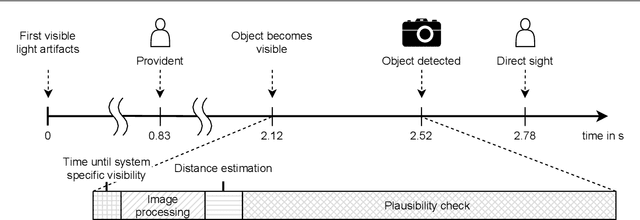

Abstract:In recent years, computer vision algorithms have become more and more powerful, which enabled technologies such as autonomous driving to evolve with rapid pace. However, current algorithms mainly share one limitation: They rely on directly visible objects. This is a major drawback compared to human behavior, where indirect visual cues caused by the actual object (e.g., shadows) are already used intuitively to retrieve information or anticipate occurring objects. While driving at night, this performance deficit becomes even more obvious: Humans already process the light artifacts caused by oncoming vehicles to assume their future appearance, whereas current object detection systems rely on the oncoming vehicle's direct visibility. Based on previous work in this subject, we present with this paper a complete system capable of solving the task to providently detect oncoming vehicles at nighttime based on their caused light artifacts. For that, we outline the full algorithm architecture ranging from the detection of light artifacts in the image space, localizing the objects in the three-dimensional space, and verifying the objects over time. To demonstrate the applicability, we deploy the system in a test vehicle and use the information of providently detected vehicles to control the glare-free high beam system proactively. Using this experimental setting, we quantify the time benefit that the provident vehicle detection system provides compared to an in-production computer vision system. Additionally, the glare-free high beam use case provides a real-time and real-world visualization interface of the detection results. With this contribution, we want to put awareness on the unconventional sensing task of provident object detection and further close the performance gap between human behavior and computer vision algorithms in order to bring autonomous and automated driving a step forward.
A Dataset for Provident Vehicle Detection at Night
May 27, 2021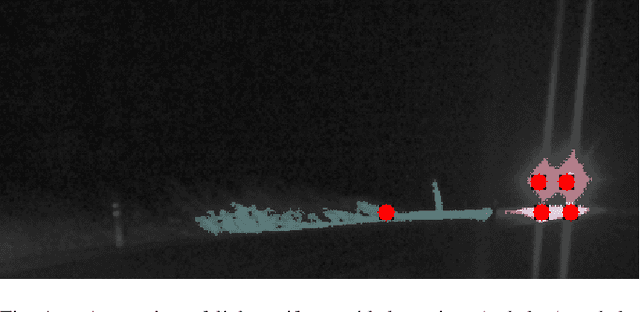

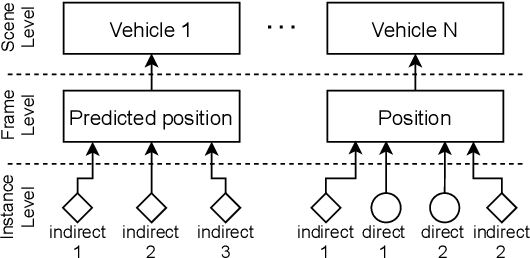

Abstract:In current object detection, algorithms require the object to be directly visible in order to be detected. As humans, however, we intuitively use visual cues caused by the respective object to already make assumptions about its appearance. In the context of driving, such cues can be shadows during the day and often light reflections at night. In this paper, we study the problem of how to map this intuitive human behavior to computer vision algorithms to detect oncoming vehicles at night just from the light reflections they cause by their headlights. For that, we present an extensive open-source dataset containing 59746 annotated grayscale images out of 346 different scenes in a rural environment at night. In these images, all oncoming vehicles, their corresponding light objects (e.g., headlamps), and their respective light reflections (e.g., light reflections on guardrails) are labeled. In this context, we discuss the characteristics of the dataset and the challenges in objectively describing visual cues such as light reflections. We provide different metrics for different ways to approach the task and report the results we achieved using state-of-the-art and custom object detection models as a first benchmark. With that, we want to bring attention to a new and so far neglected field in computer vision research, encourage more researchers to tackle the problem, and thereby further close the gap between human performance and computer vision systems.
Provident Vehicle Detection at Night: The PVDN Dataset
Jan 23, 2021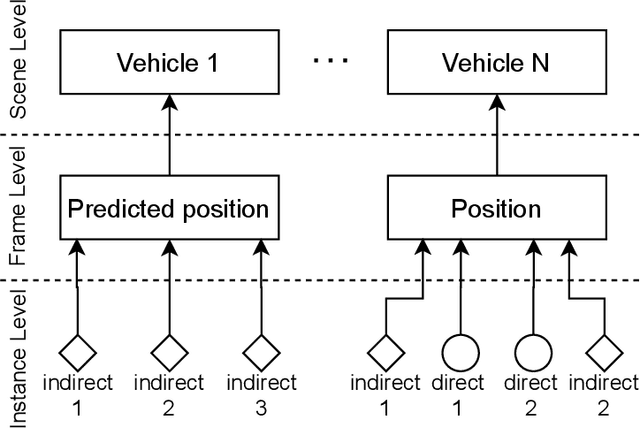
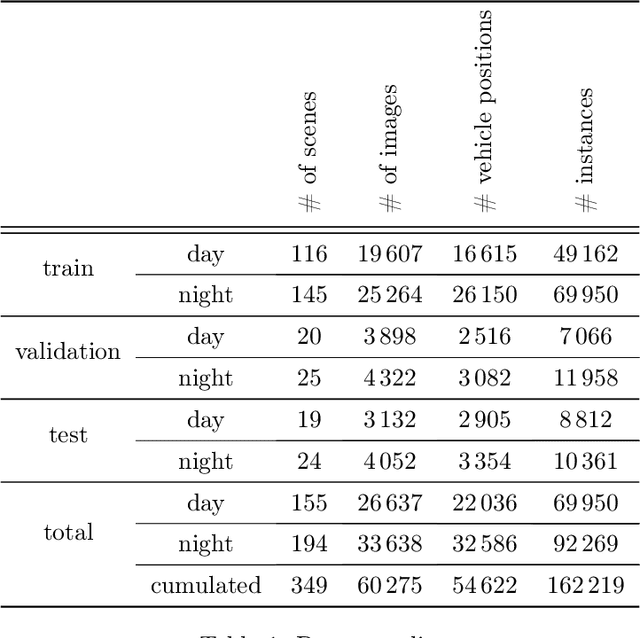
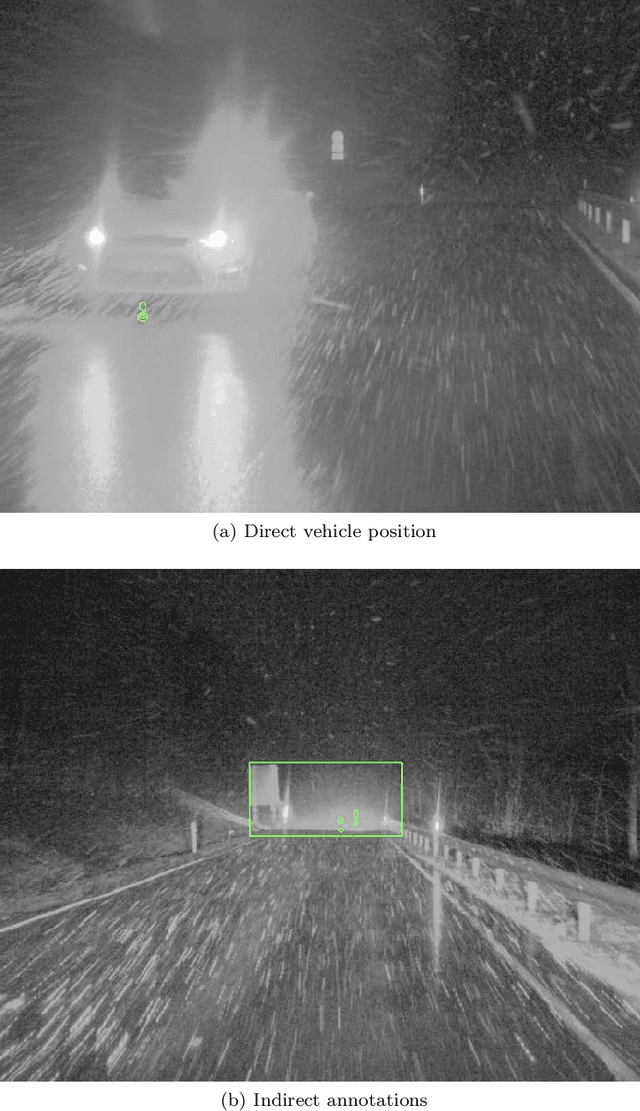
Abstract:For advanced driver assistance systems, it is crucial to have information about oncoming vehicles as early as possible. At night, this task is especially difficult due to poor lighting conditions. For that, during nighttime, every vehicle uses headlamps to improve sight and therefore ensure safe driving. As humans, we intuitively assume oncoming vehicles before the vehicles are actually physically visible by detecting light reflections caused by their headlamps. In this paper, we present a novel dataset containing 59746 annotated grayscale images out of 346 different scenes in a rural environment at night. In these images, all oncoming vehicles, their corresponding light objects (e.g., headlamps), and their respective light reflections (e.g., light reflections on guardrails) are labeled. This is accompanied by an in-depth analysis of the dataset characteristics. With that, we are providing the first open-source dataset with comprehensive ground truth data to enable research into new methods of detecting oncoming vehicles based on the light reflections they cause, long before they are directly visible. We consider this as an essential step to further close the performance gap between current advanced driver assistance systems and human behavior.
 Add to Chrome
Add to Chrome Add to Firefox
Add to Firefox Add to Edge
Add to Edge